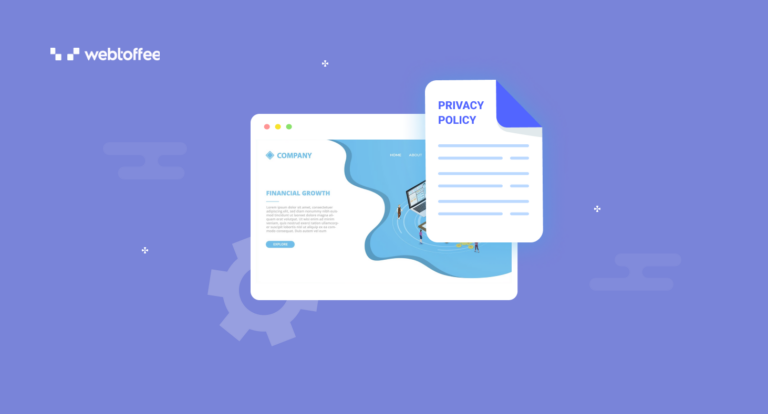In this blog post, we will be discussing what is a privacy policy, why it is required, and how you can create one. If you are looking for help to create a privacy policy for your website, this is exactly where you should be. We will also show the step-by-step guide to creating a privacy policy for your website at the end of this article. So read till the end.
Do you have a website that collects personal data from your site visitors? If so, you will need a privacy policy for your website. Major data protection laws like GDPR, POPIA, etc., require you to have a well-defined privacy policy page on your website.
If you are planning to create a privacy policy page and seeking information on how to create one, dive in to learn more.
What is a Privacy Policy?
Privacy policy is a statement issued by websites that explains how they collect, use, store, or process the personal information of their site visitors. It helps websites to be transparent about their data collection practices.
Privacy policies inform users how their personal data is handled by the websites and about their rights. Many data protection laws make it mandatory for websites to include a privacy policy page on their websites. The privacy policy page should be made easily accessible on the website so that users can read it anytime.
Most websites add the link to the privacy policy page on the header, footer, or About Us page. On our website, we have added the link to the privacy policy on the footer.

Why Do You Need a Privacy Policy?
Now, let us look at some of the reasons why you should have a privacy policy for your website.
The first and obvious reason is legal compliance. Many data protection laws mandate websites to have a privacy policy to inform their site visitors about collecting and processing personal information.
By adding a privacy policy on your website, you can be transparent in data collection activities on your website. You can use the privacy policy to describe the security measures you have implemented to protect the personal information of your site visitors.
Users are more likely to engage with your website if they know their data is being handled responsibly.
A privacy policy also includes information about the rights of the users over their personal information. It shows how they can access, correct, or delete their information on the website.
What Should be Included in a Privacy Policy?
A privacy policy should include various information to effectively communicate how you collect, use, and protect users’ personal information on your website. It should be written in a simple and understandable language. If you are using any jargon, you should explain what it means in a simple language.
Here are the important elements you should include in your privacy policy:
Introduction
Your privacy policy should begin with a brief introduction on the purpose and importance of the privacy policy and how you value your users’ personal information. This helps your visitors know what is a privacy policy and why it is important.
What Type of Information is Collected?
Inform your site visitors about what type of information you collect from them (including name, email address, payment details, etc.)
How Do You Collect the Information?
Describe the ways in which you collect information from your visitors. Whether you are using cookies, forms, or by any other means? Let them know how you collect information from them.
Why Do You Collect the Information?
Explain the purpose of collecting the information from your site visitors. What purpose the information is used for, and how long it will be stored? If you have legal grounds for collecting personal information, you should disclose that information, too.
Who Has Access to the Information?
Let your users know who has access to their personal data. Disclose whether you share their personal data with third parties, partners, or service providers. Also, you should explain what data you share with third parties and for what purpose.
What are the User Rights?
Inform your users about their rights over their personal information. Provide information on how they can access, correct, modify, and erase their data stored on your website.
How Do You Protect the Information?
Describe the security measures you have implemented on your website to protect the personal data of your site visitors from unauthorized access and potential breaches. Also, explain how you will handle if a data breach occurs.
Disclose the Use of Cookies
You may not be using cookies on trackers to collect information about your site visitors, but it is likely that some services or plugins you use on your website may use cookies. So it is important to let your users know that your website uses cookies.
You can add the information on cookies to your privacy policy. Ideally, it’s better to have a separate cookie policy page on your website with detailed information on cookies.
But, if you are disclosing the use of cookies on your privacy policy, here are a few things you should add:
- Explain what cookies are
- Disclose why you use cookies
- List all the cookies you use on your website and why it is being used
- Inform users how they can consent to cookies
- Inform users how they can revoke their consent
Also Read: Requirements for a GDPR Compliant Cookie Policy
Disclose the Transfer of Personal Data Across the Border
If you operate in multiple countries, chances are you might be transferring the personal information of your site visitors across the border. You should disclose this information to your site visitors. Let them know that you operate in multiple countries and may transfer their personal data across the border.
How Do You Handle the Personal Information of Children?
If you are collecting personal information from minors, you should follow specific protocols to protect the confidentiality and security of the information. It’s better you have a separate Children’s privacy policy on your website. You may also require consent from the parents before collecting any information from the children.
If you are not targeting minors and do not collect personal information from children, you can state that in your privacy policy. Also, it’s better to include instructions on how minors can request the deletion of any data they may have shared with you.
Changes to Privacy Policy
You can disclose your rights to change or update your privacy policy on your website. Also, let your users know that they will be informed about the policy update. Mention the channel of communication as well.
Also, some laws, like CCPA, require you to update your privacy once in every 12 months. You should mention the last update date of your privacy policy to ensure more transparency.
Contact Information
Provide your contact information on your privacy policy to let your users contact you if there’s any dispute. It also adds more transparency and increases the credibility of your website.
The above-mentioned are the various fields and elements you should include in your privacy policy. Adding this information will ensure transparency and effective communication of data collection practices on your website.
Download our free privacy policy template, and make changes accordingly.
How to Create a Privacy Policy for WordPress?
If you are using WordPress CMS for your website, follow the below steps to create a privacy policy on your website.
Step 1: Open your WordPress dashboard and navigate to Settings > Privacy.
Step 2: Click on the Create button corresponding to ‘Create a new privacy policy page.’
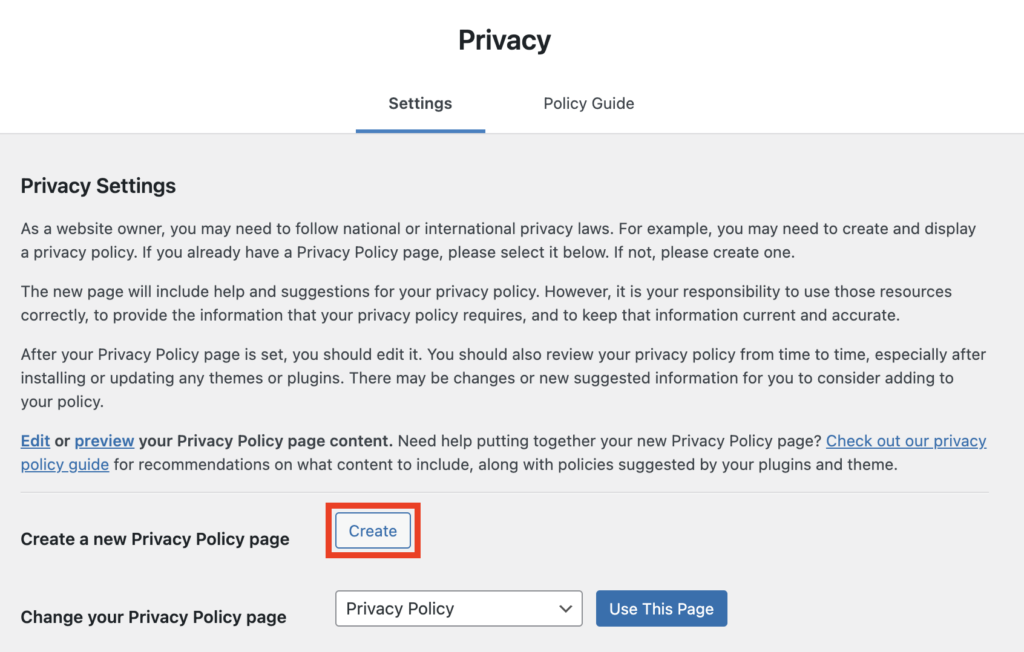
Step 3: You will be taken to a privacy policy template page. It has some pre-set fields that you can edit or remove. You can also add any other fields to your privacy policy.
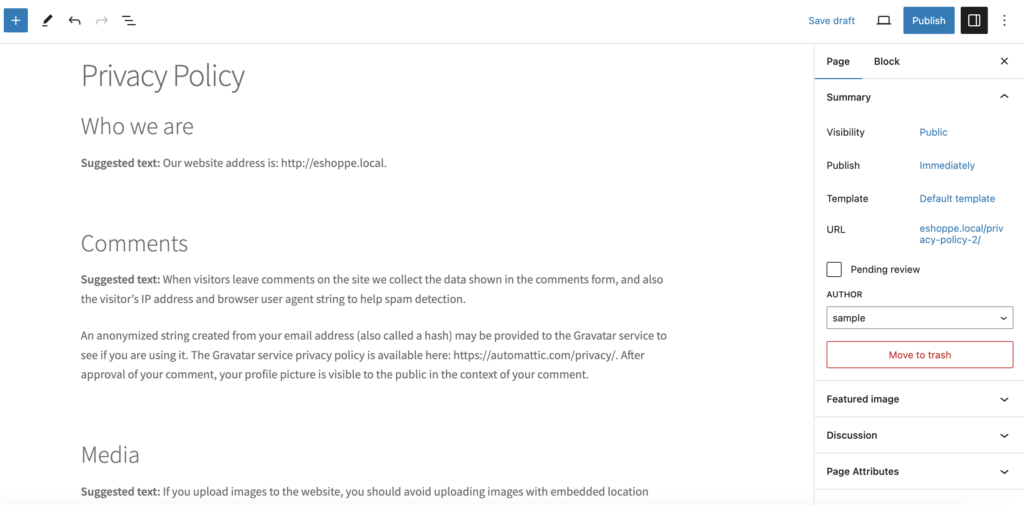
Step 4: After making the necessary changes, click on the Publish button to publish the privacy policy page on your website.
The privacy policy page will be added to the Home page navigation menu.

Some Examples of Privacy Policy of Popular Brands
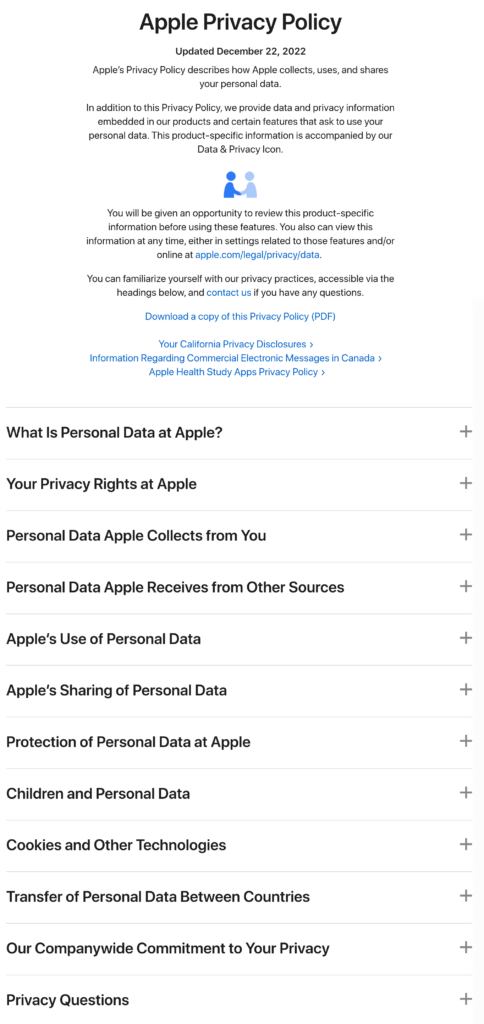
Apple’s Privacy Policy
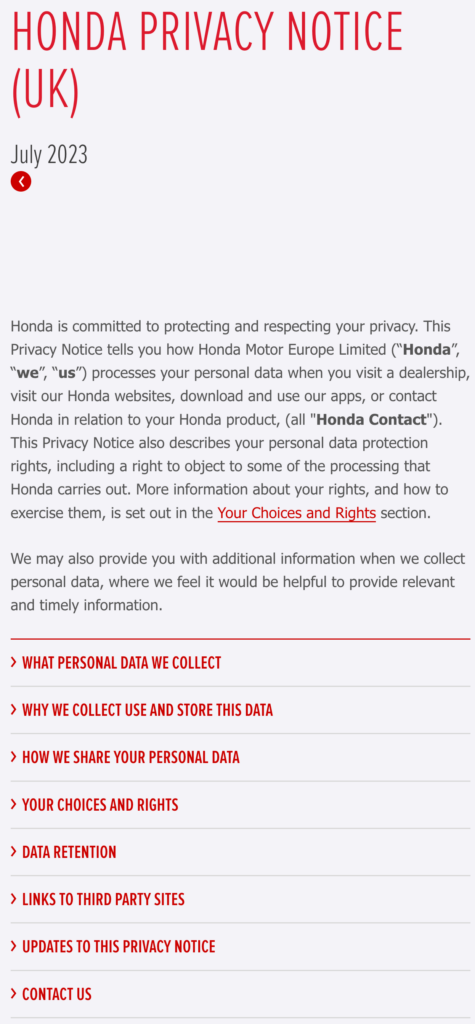
Honda Car’s Privacy Policy
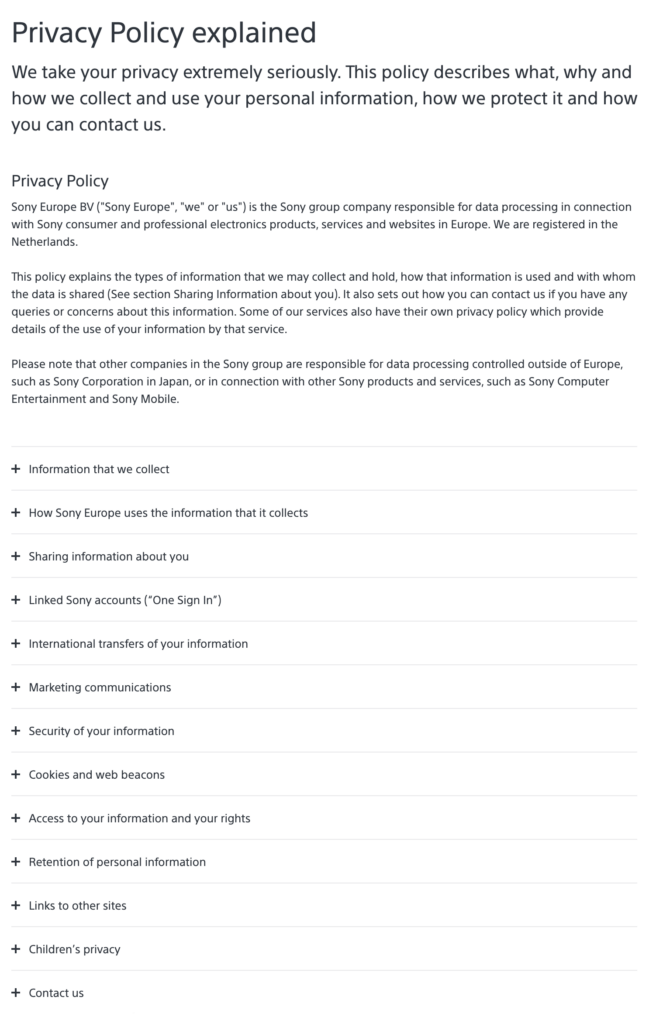
Sony’s Privacy Policy
Conclusion
Understanding the importance of privacy policy for your website is essential in today’s digital landscape. This article has provided you with information on what a privacy policy is, why it is required, and how to create one. As a website owner, it is your responsibility to ensure transparency and compliance with data protection laws.
A well-defined privacy policy will not only help you comply with data protection laws but also build trust with your site visitors. By following the guidelines mentioned in this article, you can create a privacy policy that benefits both your business and your users.
If you find this article to be helpful, let us know your thoughts in the comments section. We also recommend you read our article on eCommerce and digital privacy.
